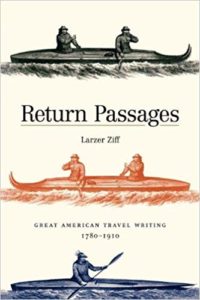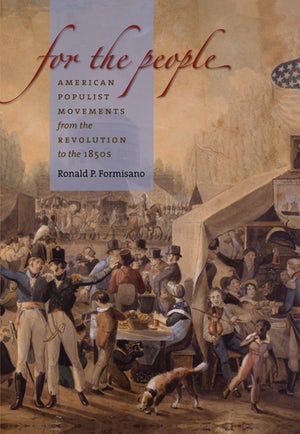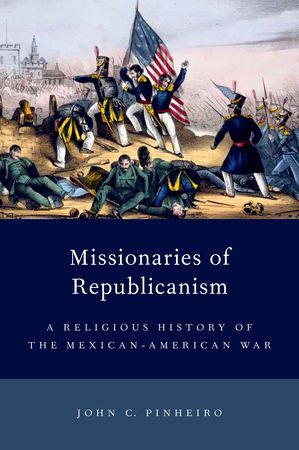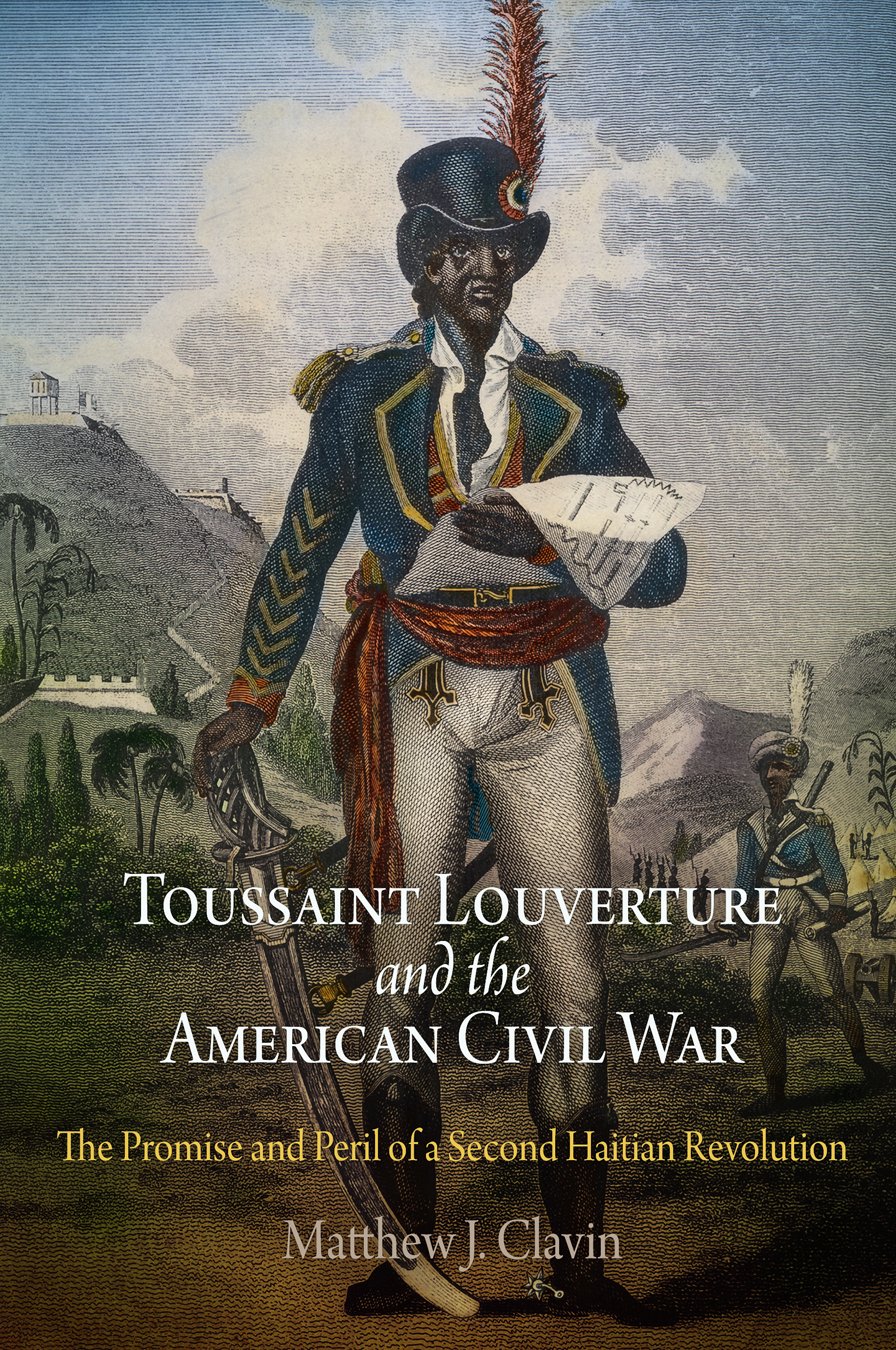Larzer Ziff’s new book surveys the travel writing of five men: John Ledyard, John Lloyd Stephens, Bayard Taylor, Mark Twain, and Henry James. Although this sequence represents well the changing styles of travel books across the nineteenth century, the contrast between Ledyard and James is so great that the term “travel writing” seems insufficient. Indeed, in my estimation it doesn’t really define a coherent genre. The field perhaps ought to be broken up into three genres: exploration narrative, travel writing, and touristic writing. And to put these three in perspective one needs to recognize two additional modes: ethnography and guidebook. Exploration narrative is about travel by one who doesn’t know precisely where he is, where to find the place he is looking for, or who the local inhabitants are. The encounters with natives portrayed in these texts are, if not actual “first contact,” nonetheless startling confrontations between peoples who know little of one another, least of all their respective languages.
Exploration narratives are not really defined by geography, they do not always push beyond the existing maps, but they do convey the fear and fascination of the unknown, and the European colonial fantasy which inspired Conrad’s Marlowe in Heart of Darkness to dream of the “blank spaces on the earth” and how he might go there.
In travel narratives, on the other hand, the places visited are already known to the writer and to the reader, and the author therefore must balance between preconceptions and experience, between previous accounts and his own. “The more such sites had been described by previous travelers the more, it seems, succeeding travelers were obligated to visit and again describe them” (137) Ziff writes, referring to the religious landmarks of Palestine which had been literary set pieces since the Middle Ages. This dynamic operated even in early colonial works we don’t usually think of as travel writing: “In 17th and 18th c. America . . . the original settlers had arrived with expectations formed from their reading of the accounts of earlier travelers to North America” (7).
Touristic writing evolved once transportation and services had sprung up to serve travelers, making the previous style of “travel” scarcely possible. Ziff distinguishes between Taylor and Stephens as travelers, and Twain as a tourist. Whereas Taylor’s first book, Views A-Foot (1846), tells of his low-budget walking tour of Europe, Twain’s 1869 Innocents Abroad recounts a voyage on a steamship chartered by wealthy Americans. A self-conscious and ironic tourist, Twain avoided the hackneyed Grand Tour by satirizing it: “the originality of his work compared with other books of travel would reside in his paying closer attention to the tourist experience and to tourists themselves than to the places visited” (185).
The progression across these three genres manifests an increasingly self-conscious narrative persona, and hence it is fitting that Ziff’s book should conclude with James, who “unerringly moved in his travel writing toward a reliance upon his sensibility, upon the representation of the impression a site made upon him” (229). It would be interesting to read an analysis of how James’s touristic sensibility reflected the techniques he employed upon the characters in his novels, but instead the passages Ziff quotes mostly reveal James’s anti-Semitism and snobbish contempt for popular culture and the lower classes. I was not for a moment inspired to head for the library to check out Italian Hours (1909) or The American Scene (1907).
Ziff links together the five authors not with analysis of the rhetorical and generic qualities of travel writing (which is why I feel compelled to offer my own), but with a history of the genre as publishing niche and career path. Travel books sold better than novels did in the nineteenth century, and Twain was forced to return to touristic writing and lecture tours to stay solvent at a time when Huckleberry Finn and Tom Sawyer sold poorly. Ledyard’s book was “the first travel account by an American to be published in the new nation” (5) and a petition that he made to the Connecticut assembly to support it resulted in the first copyright legislation in the United States. Stephens was the first who “could finance future travel on the proceeds from the books about his previous travels” (83). Taylor’s “Views A-Foot originated the genre of ‘Europe on a Shoestring'” (127), and some readers used it, and/or James’s works, as guides for their own tours of Europe, even as Karl Baedeker began publishing his successful series of guidebooks in the 1860s. In touristic writing like Twain’s and James’s, authorial sensibility often overwhelms the place itself, and the modern era has therefore developed a separate genre, the guidebook, that effaces the narrative persona while providing the preconceptions that tourists still so badly want to have when they confront a site.
Ziff’s book disappoints because although it acknowledges what we might call the solipsism of travel writing–the fact that it assumes a cultural affinity between author and reader–it rarely analyzes the racist and imperialist expressions of the five authors. Mary Louise Pratt’s Imperial Eyes (New York, 1992) examined the rhetoric of travel writing alongside that of imperialism, but although Ziff acknowledges that Taylor’s works “provide a fascinating (albeit disturbing) account of the rise in America of the twinned ideologies of the culture of travel . . . and that of imperialism” (120), he too often simply laments or excuses the racism of Stephens, Twain, and James. For example, Pratt’s concept of the rhetoric of the “anti-conquest” applies to Ledyard, who as a member of James Cook’s third expedition, and later in his attempted transit across czarist Russia, claimed to “travel under the common flag of humanity” (46) free from imperial political motives. Perhaps the best such analysis in Return Passages is of Taylor’s dressing as a Muslim to enter a mosque: “Even as he indulges himself in different practices he conveys an awareness of himself as a participant in a performance that can end whenever he wishes although the other actors cannot” (139). The book would be stronger if it explicitly theorized these effects and compared them across the five authors.
One can learn far more about European encounters with the cultural “other” from the Journal of Henri Joutel. This is of course an exploration narrative, and, I would argue, one of the finest in the genre. The epic story of René Robert Cavelier, Sieur de La Salle, has been told many times, most notably by Francis Parkman, but is not prominent in popular history today. La Salle’s expedition of 1680-82 was the first to descend the Mississippi River all the way to the sea, but since he then returned upstream to New France, the exact location of the river’s mouth remained uncertain. In 1684 he led four ships with nearly three hundred people into the Gulf of Mexico to find the river, but ended up much too far west, in Matagorda Bay, Texas. Two of the ships wrecked there, and after two years in a makeshift settlement, La Salle, Joutel, and a small party set out overland, northeastward toward the Mississippi. La Salle was murdered by his men, and only Joutel and five others finally reached a French post at the mouth of the Arkansas river. Those who remained at the settlement were nearly all killed.
La Salle himself never wrote a comprehensive narrative of his first expedition (and of course couldn’t write about his second). It is this text by the modest Joutel, not those by self-aggrandizing Louis Hennepin or the brave but reticent Henri de Tonti, that offers the best account of La Salle’s explorations. Yet it has been largely ignored. A French text, it doesn’t fit into Anglo-American heroic origins, like Lewis and Clark’s journals, and it hasn’t enjoyed a revival as Chicano literature the way Cabeza de Vaca’s Naufragios has. Yet as exploration narrative it’s much better than the former and every bit as good as the latter.
Joutel’s narrative persona won my sympathy the way Taylor, Twain, and James could not. As the party pushes on for days through knee-deep water during winter floods in east Texas, as they put their lives into the hands of native guides, Joutel’s quiet courage is astounding. In criticizing La Salle’s imperious leadership, and then in dealing with his assassins, he conveys great tact and judgment. He also excels in his descriptions of daily life around the Matagorda Bay settlement, quasi-sentimental stories of seductions and marriages, of the distribution of food and efforts at gardening.
Best of all, Joutel’s exploration narrative is one of very few that powerfully conveys the anxiety and difficulties of communication between Europeans and American Indians in early encounters. In Columbus’s journals and many other texts one reads accounts of apparent conversations, “they said” and “we said,” in spite of the fact that no interpreter was available and direct oral exchanges were impossible. But Joutel is more circumspect: “When we told them we were going to visit the Cenis, they informed us that to the northeast we would find plains and to the north, on the other hand, we would experience great hardships because of the forest that was very difficult. This was all in signs, however, and one is often mistaken in the interpretations one makes from these signs, taking things in one way when they mean another” (164). At another point he reproves friar Anastase Douay, author of a competing account of the expedition, for claiming to have preached the gospel to the natives, when they could not possibly have understood him.
Moreover, Joutel’s text thematizes these problems of communication in complex, literary ways, in scenes that show how misunderstanding and prevarication were inescapable among the Frenchmen, not just between them and the natives. After La Salle is killed, Joutel must continue to travel with his killers. He opposes their plan to return to the settlement, but he dares not declare his intention to find a French post on the Mississippi, for fear that he might be killed as a potential witness. When he finally reaches the post, he does not reveal the facts of the assassination, but implies that La Salle is still alive at the settlement, because he hopes to be able to mount an expedition to save the others.
For its suspenseful portrayal of adventure, survival, and cross-cultural contact, Joutel’s exploration narrative deserves to be a bestseller as much as Into Thin Air (New York, 1997) or Undaunted Courage (New York, 1996). But ironically, the broad appeal of this exploration narrative is undercut by the parochialism of its editorial apparatus. William C. Foster’s introduction emphasizes his identification of the three major rivers Joutel called the Maligne, the Canoe, and the Cenis, as the modern Colorado, Brazos, and Trinity. This enabled Foster to trace the path of the climactic journey, which readers can follow in several handy maps. The route is documented by numerous footnotes to geographical, botanical, and ethnographic references, including many narratives of Spanish colonial explorations of the area. A few historians and some Texans may find this material important, but most readers will regard it as a distraction from Joutel’s narrative.
Nonetheless, this edition is an important achievement, for it represents the first time the entire text is available in English. Journal historique du dernier voyage qui fut M. de la Sale was published in Paris in 1713, and in English translation the following year, but the French editor abridged the text of Joutel’s manuscript. Foster and translator Joanna Warren worked from the edition by nineteenth-century French historian Pierre Margry, and checked it against surviving manuscript copies. That this book should appear from the Texas Historical Society revives a noble tradition in American public history, and recalls a history of travel writing that was ignored by Ziff. The period of the colonial revival in architecture (roughly 1870-1910) was also the period in which many state historical societies were founded and published editions of colonial narratives and documents which are invaluable for academic historians and the general public today. Reuben Gold Thwaites’s Early Western Travels and Jesuit Relations, Hubert Howe Bancroft’s histories and collections on California and the Western states, Charles Hackett’s translations of documents on New Mexico, and publications by the Michigan, Illinois, New York, and other state historical societies cultivated a regional memory of colonial America that has been too often overlooked even as scholars work to recover the nation’s multilingual colonial past. The Joutel volume shares the virtues and the shortcomings of these editions of nearly a century earlier. It is thorough, handsome, and built to last, but also expensive, poorly marketed, and occasionally pedantic. It deserves a much wider readership than it is likely to find.
This article originally appeared in issue 2.2 (January, 2002).
Gordon Sayre is associate professor of English at the University of Oregon, and the author of Les Sauvages Américains: Representations of Native Americans in French and English Colonial Literature (Chapel Hill, 1997).



















